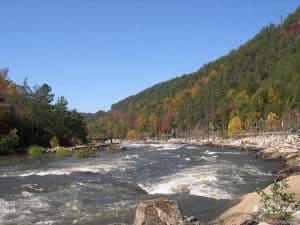The District Court accepted the magistrate’s recommendations with minor clarifications and upheld livestock grazing activities on the Malheur National Forest. (D. Or.) Also reported here.
(New case.) Three southwestern tribes filed the third lawsuit challenging the Rosemont mine on the Coronado National Forest. (D. Ariz.) Also reported here. (See below also.)
(New case.) According to the complaint, the Tonto National Forest reopened portions of an allotment that had been closed since 1979 without conducting an analysis of the effects. (D. Ariz.)
(Notice of intent.) Plaintiffs seek reinitiation of ESA consultation on recreational summer cabin permits in Mount Graham red squirrel habitat as a result of recent fires on the Coronado National Forest.
Blogger’s note on the Tohono Oodam case: The complaint challenged the Forest Service interpretation of the 1872 Mining Act that it is required to provide unpatented lands for disposal of the mining waste. Here is a summary of this point from the article linked above:
“The Coronado may impose reasonable conditions to protect surface resources, but cannot materially interfere with reasonably necessary activities under the General Mining Law that are otherwise lawful,” Dewberry (the forest supervisor) wrote.
The lawsuit, however, asserts that the 1872 mining law gives people a right to occupy and use public lands for unpatented mining claims — the kind Hudbay has on Rosemont’s national forest lands — only when they contain a valuable mineral deposit. There’s no evidence of any mineral deposits on the lands where waste rock and tailings will go, the suit says.
“Say you are doing business and it results in some kind of waste. You can’t just put it in a neighbor’s land. You have to accommodate it on your own property, or find a place to get rid of it, without causing an environmental threat,” attorney McIntosh said on behalf of the tribes. “You can’t put it on public lands and say the Forest Service can’t say no.”



